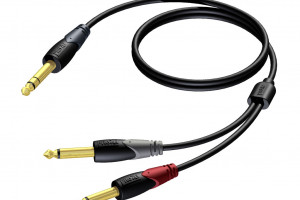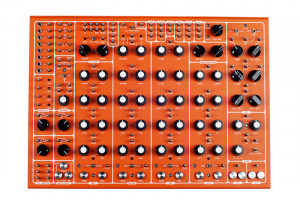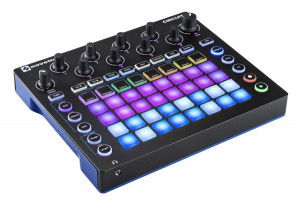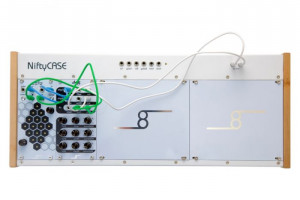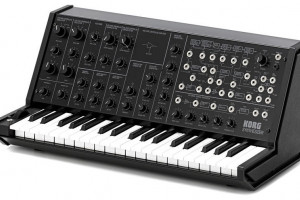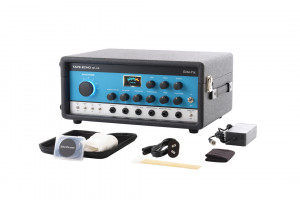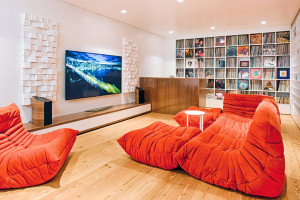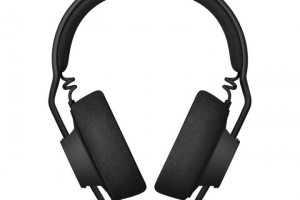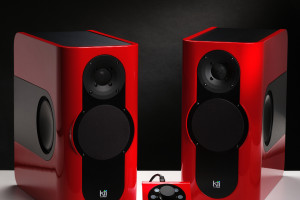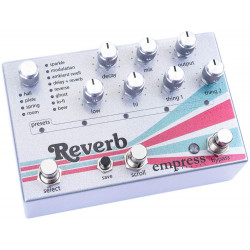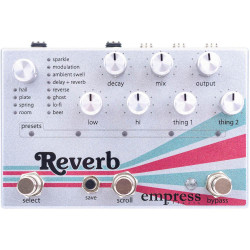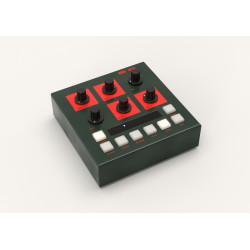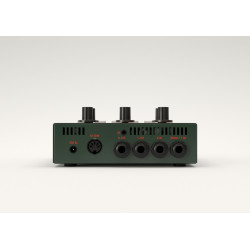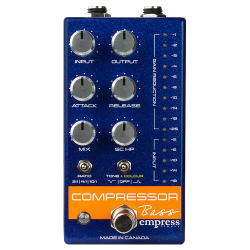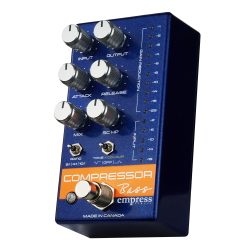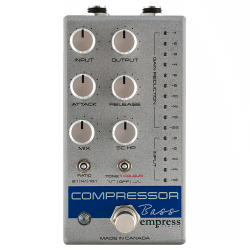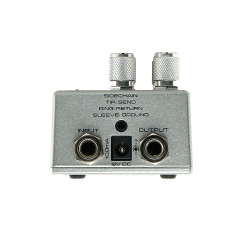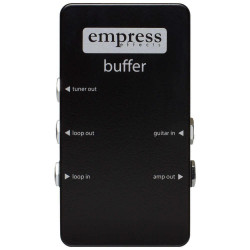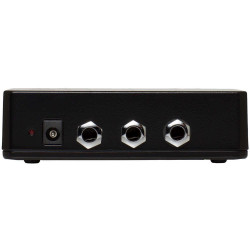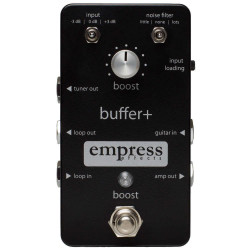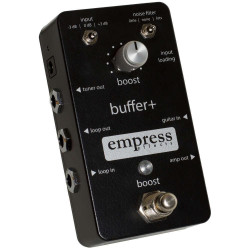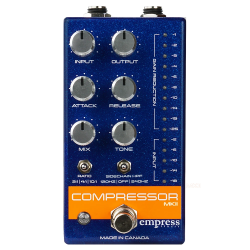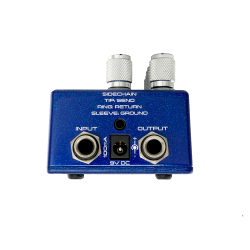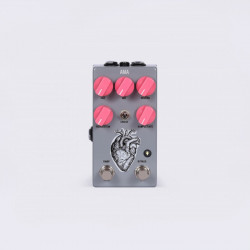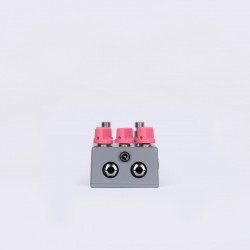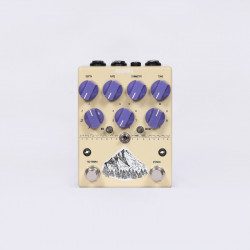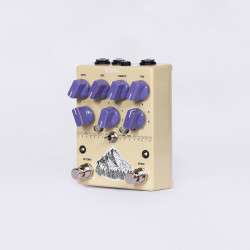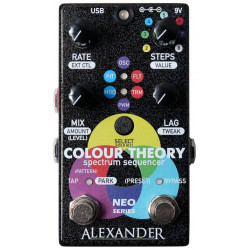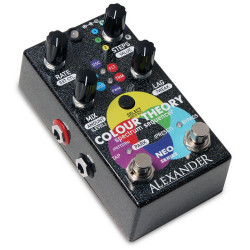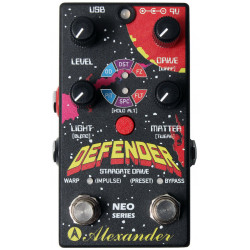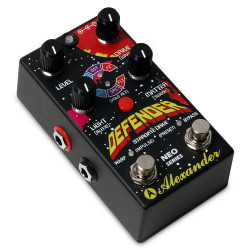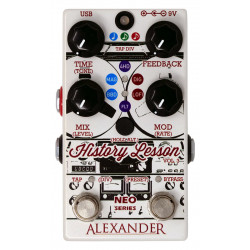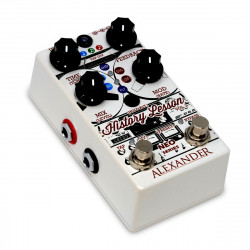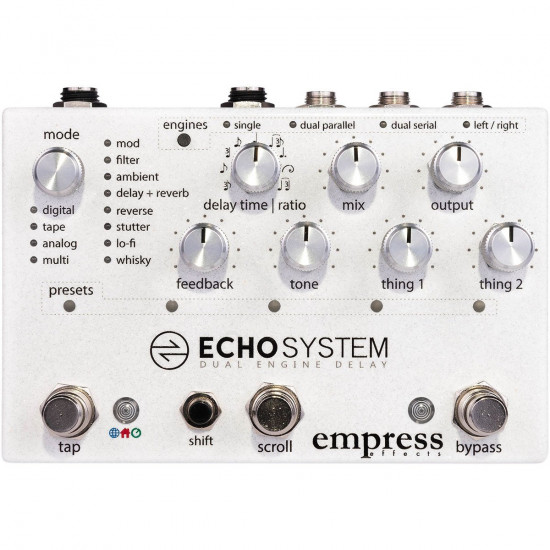

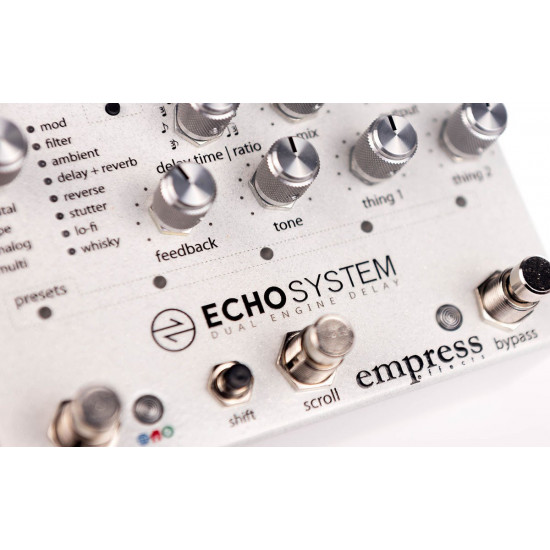
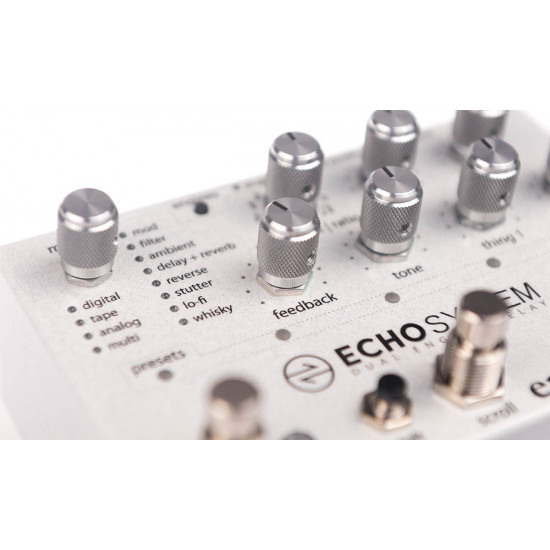
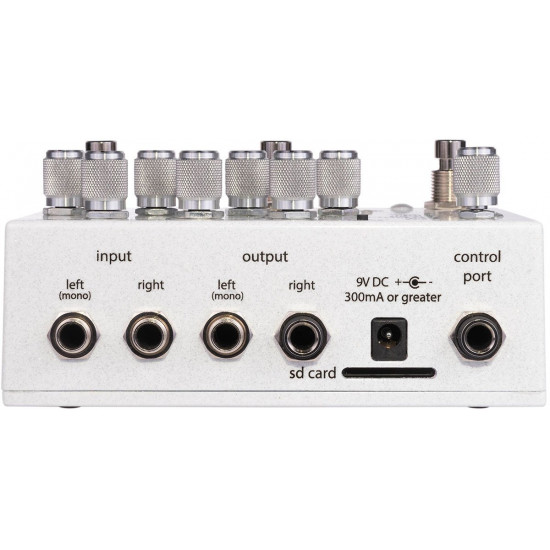





- Stock: In Stock
- Model: EMPRESS-ECHOSYSTEM
More from this brand
Overview
Spanning the gamut of known delay possibilities and beyond, the Echosystem could be the ultimate delay-crafting tool. Faithful emulations of classics like digital, tape and analog delays are numerous, as well as Empress' own take on each of these delay styles. Moving beyond the traditional, the vast amount of sonic ground the Echosystem can cover becomes apparent. Check out the ambient modes when you're feeling chilled out, or perhaps a visit to the multi tap modes for a taste of inspiration.The Dual Engine functionality allows any 2 of these delays to be used together, routed in either parallel, series, or left/right configurations.
In addition to delays, there's the super-useful reverb combos, which will elevate any guitar part. Oh, and don't forget Whisky mode, best accompanied by a dram of whatever you've got!
Features
- 42+ studio quality algorithms and counting - The pedal has 12 algorithm types, all with multiple variations. For example, there are 4 different tape delays on tap.
- Classic Sounds - Emulations of classic tape and analog units are available, as well as our take on these types of delay.
- Easy to use and fast to dial in - All the algorithm controls are sitting on a knob in front of you, no fiddling through laborious menus.
- Tap Functions - Global tap tempo as well as local tempo with lots of subdivisions are available on all modes, in addition to being able to set the delay time directly with the knob.
- Low Noise signal path - Features a signal to noise ratio of >104dB and maintains an analog dry path.
- Dual Delay Engines - 2 delays can be used at the same time, each with its own full set of controls and routed in serial, parallel or left/right.
- Up to 35 Presets - Settings can be saved to 35 presets. With three stomp switches, accessing the presets is easy.
- 2 Preset Modes - Bank style or scrolling style preset modes.
- True Bypass and Buffered Bypass - It can be configured to run with true bypass or buffered bypass if you want to hear trails.
- Cabinet Simulator - 3 variations to choose from, perfect for recording, practicing or for gigs without an amp.
- Output Transformer - Get hum-free operation when operating in stereo with two amps. Output 2 is isolated with a transformer to eliminate nasty ground loops.
- High Quality Audio - 48kHz sampling, with 24 bit conversion and 32 bit internal processing.
- Analog Dry Path - Dry signal is left untouched, and blended with the wet signal using VCA. (no zipper noise, hooray!)
- Unsurpassed Connectivity - The Universal Control Port allows you to connect an expression pedal, external tap switch, control voltage, external audio input and MIDI - all using a standard 1/4" jack!
- Advanced Configuration Menu - The Advanced configuration menu lets you configure how your delay works. Select from true or buffered bypass, 0-35 presets, MIDI configuration, Control Port(expression pedal, external tap, control voltage and MIDI) as well as which style of preset system to use, input signal pad, output transformer enable and more!
- Small Size - The enclosure measures approximately 5.7" by 3.75" by 1.75", which is delightfully small when considering all the features packed into this unit.
Digital Delay
The digital modes are clean and pristine or meant to emulate some of the characteristics of classic digital delays. These modes allow for full bandwidth and distortion-free operation.
In Use:
They sound great as a rhythmic dotted eighth delay. Or try using for a classic slap-back sound.
Tape Delay
The tape modes are designed to emulate the characteristics of a variety of classic tape delays as well as our own custom models. Tape delays typically include harmonic distortion and saturation from recording and playing the audio to and from tape. The frequency response and the modulation is also affected by the electronics and the playback motors of the device.
In Use:
The distortion and modulation combine to give a really warm and smooth sound that can be used in a variety of situations. We've chosen to emulate some classic delays which help to reproduce classic sounds from the past.
Analog Delay
Analog modes emulate some of the classic Buck Brigade Devices (BBD) that were common pre-digital delay. The BBD was a chip containing capacitive buckets that would be clocked to transfer a charge from bucket to bucket slightly delaying it each time to achieve a delay. The devices tended to be noisy at high frequencies so often heavy filtering along with companders and expanders were used at the input and output which had a big effect on the sound.
In Use:
Due to the high frequency filtering, the analog processors tend to have a darker tone and less present transients. This leads to a really smooth and warm sound overall that sits really nicely behind your clean tone.
Multi Delay
Multi modes allow you to tap a pattern of taps that can be played back with feedback. In these modes we've added different volume and filtering patterns to create really unique textures.
In Use:
These modes work well with sparser playing and can really create some unique rhythmic tones. The filter and volume patterns can really bring parts to life.
Mod Delay
These modes modulate different parameters to give movement to the sound. Many of the modes contain pitch modulation, these modes allow you to manipulate panning, and volume to create tremolo effects, as well as more un-conventional pitch modulation.
In Use:
We find these modes work both with subtle settings, or can work in short one bar bursts to create a fast auto-panning effect, or a chopped up tremolo sound. We find ourselves using them a lot in parallel modes with other modes.
Filter Delay
The filter modes apply both constant moving filters controlled by an lfo and dynamic filters that can track the volume of your playing in an auto-wah like effect.
In Use:
These modes are very versatile, and can create some really unique sounding tails. Much like the mod modes they work great subtly blended with other modes, or in aggressive settings for a more dramatic effect.
Ambient Delay
The Ambient modes are a mixed bag of useful sounds for players looking to create smooth sound scapes.
In Use:
These modes help achieve volume swells automatically and are great for lush parts. They also work well adding a subtle layer behind other delay modes when used in parallel. They work great at 100% wet.
Delay and Reverb
This classic combo is right up there with Peanut Butter and Jam. You've got to balance them just right, then the magic happens. You've heard this on every 80's recording, on every instrument, but that doesn't mean you should boycott it - with judicious use it's really musical.
In Use:
Reverb and delay is great for solos. It's also a great combo for ambient stuff.
Reverse Delay
All sounds are cooler backwards. If you don't know how to play guitar really well, just turn this mode on and you'll impress people for a short time. As you may imagine, we take the incoming sound and chop it up into discrete sections and then playback those sections backwards. It creates a crazy sucking sound.
In Use:
It helps to tap the tempo to sync up the delay to your playing. It also sounds great at 100% wet setting.
Stutter Delay
These modes emphasize the sound that's last played and repeat it. There's various varieties that lend themselves to different situations. It's a lot like a delay with max feedback but you don't get the build up to distortion and the mess that goes along with that.
In Use:
It's a really cool effect, and a lot of the settings sound really cool when you move around the knobs, or assign them to the expression pedal. They're awesome for a lot of on the fly manipulation.
Lo-fi Delay
This mode distorts, filters, modulates and destroys the sound! It can sound like an old radio, or busted up speakers, or partially working electronics.
In Use:
The modes can be super vibey. They also work well as a texture in parallel behind a more pristine delay setting.
Whisky
We don't really know how you should use these modes, or if you should use these modes. They're the outliers, the odd-balls and the ner-do-wells of the pedal. We like them a lot.
In Use:
These modes are best accompanied by a dram of whatever you've got nearby.
-285x169.png)
